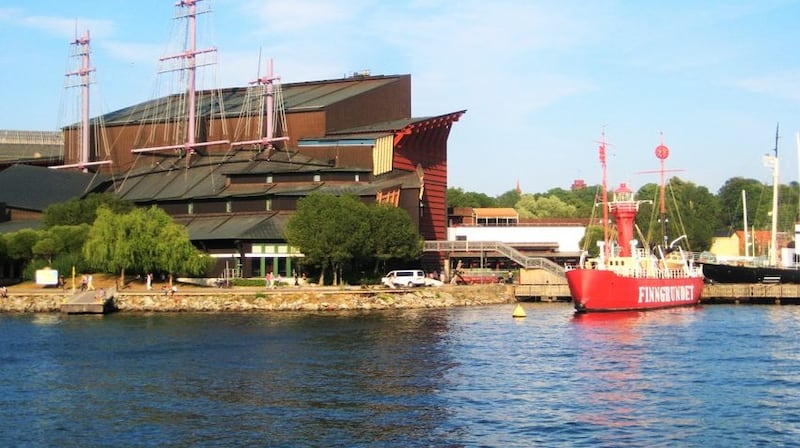The royal warship Vasa was breathtakingly beautiful as she left Stockholm on her maiden voyage on August 10th, 1628.
Cheering burghers lined the shore. Wind filled giant white sails and the ship’s guns fired a salute. The Vasa was decorated with 700 sculptures painted in gold leaf and bright colours. She had cost 5 per cent of the royal treasury and was intended to impress and intimidate.
“The message was about power, glory and the perpetuation of the crown,” says Alexandre Ponikiewski, a guide at the Vasa Museum in the Swedish capital. “King Gustav Adolph wanted to be the Emperor of the North. Sweden was at war with nearly all her neighbours: Denmark, Russia and Gustav Adolph’s arch-enemy, the Commonwealth of Poland and Lithuania” which included much of present-day Ukraine, Belarus and Moldova.
Gustav Adolph believed he was the Midnight Lion who according to prophecy would save Protestants from Catholics. The ship is covered with many sculptures of lions.
The Roman emperors Tiberius, Claudius and Caligula are also represented, but not Gustav’s namesake Augustus, since the leaping lion on the prow was meant to portray them both. In 1630, Gustav Adolph would invade northern Germany on the pretext of protecting Protestants there, not unlike Vladimir Putin invading Ukraine to “save” Russian speakers.
Like the modern-day Russian dictator, 17th century Swedes were well-versed in propaganda. The Vasa family coat of arms sculpted on the stern shows two cherubs waving olive branches. Thus a ship built for combat purported to embark on a peacekeeping mission.
The Vasa was one of the most powerful ships in the world, for about 20 minutes. She had travelled only 1,300 metres when she began to list. The gun ports were flooded and the ship sank in 32 metres of water. Other vessels raced to the scene to rescue survivors.
Casualties were light, considering that few people knew how to swim in the 17th century. Between 30 and 40 of the 200 people on board drowned. The shipwreck was such a scandal that the navy sawed off 20 metres of mast protruding from the water.
The Royal Council informed the king, who was fighting in Poland, of the disaster by letter. “Find the guilty man,” he wrote back. The surviving captain, Söfring Hansson, was interrogated. “You can cut me in a thousand pieces if all the guns were not secured,” he said. “And before Gold Almighty I swear that no one on board was intoxicated ... It was just a small gust of wind, a mere breeze, that overturned the ship.”
The Vasa had two gun decks, whereas most ships of the time had only one. Its narrow, four-storey-high silhouette was intended to guarantee speed and maneuverability, but the weight of the guns and the height of the masts made it top heavy.
Admiral Klas Fleming had conducted a stability test while the Vasa was moored at the quayside. Thirty men ran back and forth across the deck, but the ship rolled so alarmingly that the admiral ordered the test stopped for fear she would capsize. Officials knew the Vasa was not seaworthy, but said nothing because they dreaded the king’s reaction. The Royal Council held no one responsible for her sinking.

Most of the 48 one-tonne canons were salvaged in the 17th century. The Vasa shipwreck was then abandoned until 1956, when explorer Anders Franzén discovered its exact location. Over the next five years, steel cables were drawn beneath the ship, which was finally raised in April 1961.
To prevent the wood drying out and breaking, the salvaged ship was sprayed with polyethylene glycol, a water-soluble synthetic wax, for 15 years. The world’s only perfectly preserved ship from the 17th century is visited by more than a million people annually.
If the ship had sunk in the Mediterranean, says Ponikiewski, it would have been destroyed within 30 years by shipworms that attack wood. But the cold, dark, brackish waters of the Baltic preserved 98 per cent of the original ship.
The Vasa was a veritable time capsule, a piece of living history providing first-hand information on the diet, clothing and lifestyle of 17th century Sweden. After 333 years under water, a man who was crushed by a cannon was still wearing his shoes, trousers and jacket. The remains of 18 people, including two women, were found in and around the ship. Crew had been allowed to take family members on the inaugural voyage.
What can the Vasa teach us today? I asked Ponikiewski. “Don’t get too cocky,” the museum guide said. “It’s all about hubris.”

















